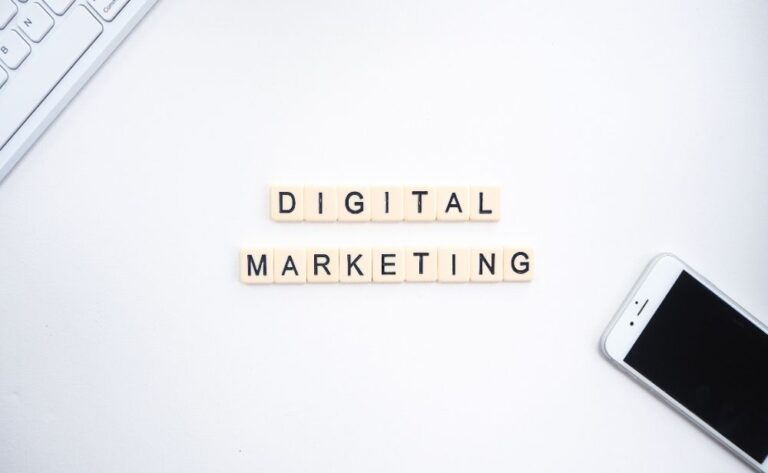5 Ways to Maximize SEO and Social Media
Because it makes it easier for people to locate your material on the internet, search engine optimization (SEO) is an essential component of any digital marketing plan. Your website will receive a greater number of visitors proportionate to how high it ranks on the SERP (search engine results page).
The marketing of social media platforms has become an additional method that is quite efficient in luring people to your website. And all of this is dependent on having a powerful social media strategy that increases both brand awareness and return on investment (ROI). Making sure that your social media marketing, content marketing, and search engine optimization techniques all complement each other is the sweet spot in a digital marketing campaign.
In this post, we will help you grasp the intricate relationship between search engine optimization (SEO) and social media, and we will also offer 5 recommendations on how you can make the most of both of these platforms.
Does Google take into account signals from social media?
On social media, acts such as liking and sharing content are examples of social signals. Therefore, will the number of social signals that your content generates have an effect on how well it ranks on Google? Over the course of several years, Google has sent forth contradictory messages regarding this issue.
In 2010, the major search engine began using social signals as a consideration in ranking, with a priority placed on the quality of the signals rather than the quantity. This indicates that Google takes into consideration the author’s or creator’s standing inside the social media platform in order to decide ranking.
However, Google made the decision in 2014 not to rank these social signals anymore; to put it another way, you cannot utilize likes or shares to increase your rankings from an SEO point of view. This decision was made. Despite this, you shouldn’t give up on your social media strategy just because it’s digital marketing because it’s an essential component of any digital marketing effort.
Acquiring backlinks from credible sources that are of a high quality is ultimately the most important factor in achieving a high search engine rating. Shares on social networks are another way to help get your material in front of new people who might be interested in it.
Read our article for some expert advice on how to build backlinks to the websites you own and maintain.
On the other hand, that’s not the whole story…
The experiment with the ice-cream
AK Kohn addressed the question of whether more social signals directly cause higher SEO rankings or simply correlate with them in a popular blog article. He explained it by comparing it to ice cream scoops. According to the chart that follows, an increase in ice cream sales may be attributable to the fact that fewer people are wearing garments.
The sunny and pleasant weather is to blame for this situation. The sales of ice cream and garments are simply tied to one another.
But what do sales of ice cream have to do with search engine optimization and social media? When you have social shares, more people will watch or impression your content on social media. It’s possible that some of these impressions come from social content providers who, in turn, link to or mention your website, which results in a higher SEO rating for your business.
Let’s say you publish a blog post and one hundred people tweet about it. As a direct consequence of this, 10,000 additional visitors will view your blog. That is indeed a remarkable accomplishment! Nevertheless, let’s say that out of these 10,000 persons, 100 are content makers for social media. After that, some of these content producers might connect to your blog. And where do you go from there if you have great backlinks? Better rankings in search engines!
Therefore, although Google does not take into account tweets or shares, it does take into account the hyperlinks that are generated as a result of those shares. Additionally, keep in mind that your social media profiles will be visible in search engine results pages.
Obtaining backlinks through the use of social media.
What can we learn about the social cues that people use now from all of this intricate history?
• Social signals are important: content that is shared frequently will have a greater chance of being viewed frequently.
• Social signals are a direct cause of backlinks: backlinks are a direct result of content that is viewed by significant social media creators.
• Backlinks boost SEO ranking: Google gives a higher page rank to content that has a greater number of incoming links.
Backlinks, not social signals, are what boost search engine optimization rankings the most. The quantity of backlinks you may anticipate developing through social media will be significantly affected by the type of following you cultivate, particularly one that consists of creators.
The most effective strategy for acquiring backlinks—hopefully of a high-quality—is to:
• Create informative material that is deserving of links. This includes topic clusters that naturally draw links, such as topic clusters in blog entries and manuals.
• Establish a strong presence on social media using venues that are appropriate for promoting link-worthy material.
• Links coming from social media websites (such as Facebook, Twitter, and LinkedIn, among others) do not usually have a direct impact on SEO but can have an indirect positive impact on it. Your material will gain greater exposure and re-shares, and some of those people, such as journalists, bloggers, and influencers, may pick up your content and link to it from their sites. This will increase the amount of exposure and re-shares your content receives.
• Distribute the content via email, push alerts to subscribers, and social media.
• Reach out to key influencers with the content.
• Investigate the backlinks of your competitors by using a service such as Ubersuggest.
How to combine search engine optimization and social media
Your content is going to play a significant role in determining how successful your overall approach is going to be, just like it does for any SEO or social media campaign.
Locating the optimal balance
The optimal combination of your search engine optimization (SEO), content marketing, and social media strategy is where you will find the sweet spot.
You can achieve this optimal position by producing informative information of a high quality, such as:
• Blogs or articles – take a look at these fantastic resources and models for writing effective blog posts.
• Videos, video stories, and live video
• Guides, such as how-to guides or eBooks
• Videos, such as video stories or live video
• Video podcasts
• Audio podcasts (with transcripts)
• Info graphics – here are some resources that can help you produce info graphics
• Podcasts (with transcripts)
Do not be disheartened if you feel as though you have a lot of work ahead of you! You are able to recycle and repurpose material across a variety of different platforms. For instance, one blog piece may serve as the foundation for multiple info graphics, and one lengthy movie could be segmented into several shorter video stories.
Groups of related topics
The use of topic clusters is an effective method for organizing the informational content of your website and including SEO writing into your overall content mix. In its most basic form, your discussion is organized around an overarching theme and a number of related but distinct subtopics. For instance, the primary focus of your paper might be on social media marketing, and you might go on to discuss various aspects of this field in relation to various social media platforms as subtopics.
The primary subject matter is referred to as the pillar material when it is organized into topic clusters. And the content of the clusters is made up of the subtopics. When you are organizing your material, you should make sure to employ hyperlinks to connect the content of your pillars and clusters.
Tailor your content
Think about where your consumers are in the customer journey so you know how to best nurture them through the sales funnel. When it comes to increasing awareness and interest, the informational content at the top of the page is the most crucial. People are not yet prepared to decide whether or not to make a purchase. When a person is getting closer and closer to making a purchase choice, transactional content becomes increasingly more relevant. Here is where you make the process of converting for clients as easy and stress-free as you possibly can.
The mistake of concentrating one’s attention entirely on transactional material is a prevalent one. You won’t be able to establish the kind of following you desire on social media if all you do is make requests and post promotional content. If all you have is transactional content, it will be more difficult to achieve a high search engine position.
Therefore, you should serve first (with content that provides information) and sell second (with transactional content). This makes the information more appealing to Google as well as the various social media platforms!
Open graph Meta tags
Using open graph Meta tags will make the snippets you post on social media more aesthetically appealing, increasing the likelihood that they will be read and shared.
You may use opengraph.xyz to generate the meta tags that you need to add to your website as well as preview how your content appears when it is shared on social media. You can also use this tool to see how your content appears when it is shared on social media. (It’s possible that you’ll need an additional plugin like RankMath in order to provide open graph meta tags.)
5 Suggestions to Improve Your Search Engine Optimization for Social Media
As was discussed earlier, the majority of the time, publishing content on social media does not directly affect SEO. When you post your material on social media, however, it has the potential to effect SEO in the following ways:
• Drive organic traffic
• Increase visibility
• Broaden the reach of your content
• Improve your brand recognition
• Build more backlinks
The question now is, how can you boost the SEO of your social media profiles?
1. Put Some Work into Your Profile Keeping in mind that your social media profile is one of the first things a potential client or customer will see, you should put some effort into creating a profile that is interesting and accurately represents your company.
• Provide as many specifics as you can in order to paint an accurate picture of what it is that your company does.
• Make use of keywords that are pertinent to both your brand and the words or terms that people search for.
• Have backlinks to the content that is located on your website in order to increase website traffic.
LinkedIn is a very effective social media network for business-to-business communication; therefore, you should investigate how to make the most of its potential. Or, if you choose to use a personal account, the following are some suggestions that can help you enhance your profile.
2. Make sure that the content on your social platforms is of a high enough quality to be shared.
Customers have access to a wide variety of platforms and accounts, which means that you need to maximize the effectiveness of your content in order to attract and engage customers. Make use of a range of content kinds, such as videos, blogs, testimonials, and so on, to get a better sense of what your audience enjoys reading and seeing.
Additionally, make use of high-quality imagery that is connected to your brand, so that when people see it, they immediately recognize it as belonging to you. This will boost both the recognition and awareness of the brand.
3. Motivate users to link back to your site by providing valuable material
People will only share stuff that they consider to be of high quality or that is pertinent to the audience they have. If there is a limitation of either resources or time, it is important to place an emphasis on the quality of the work rather than the quantity.
Invest some time in topic study, and, in addition to internal links, demonstrate your authority by include links to external sources and studies with a high level of credibility. It is also beneficial to include quotations from professionals in the field as well as facts that support the viewpoint that you are presenting.
Above all else, make sure you have a voice and an opinion about your industry because doing so will help you become a leader in that sector.
4. Make use of social listening to keep up with what is happening in the outside world, both with your competitors and with other people.
There are a number of fantastic free tools available that you can use for social listening, which is an effective SEO strategy. You will be able to monitor conversations, find out what your audience is saying about you, and keep an eye on your competition with the assistance of these.
Keeping a tight ear on your platforms is an excellent idea for managing online reviews and overall customer service because an increasing number of people are turning to social media to seek answers to issues, read reviews (and complain), and communicate in general.
5. Pay attention to those who have influence and think about utilizing them.
It’s likely not news to you that people who wield influence on social media can alter others’ opinions. You need only take a glance at the influencer analytics in order to determine the exact amount.
You don’t need to have such lofty goals for your influencer marketing strategy, but if you are aware of influential people in your industry or region that your target demographic pays attention to, it is something you should think about doing if you want to make the most of your social media presence.







